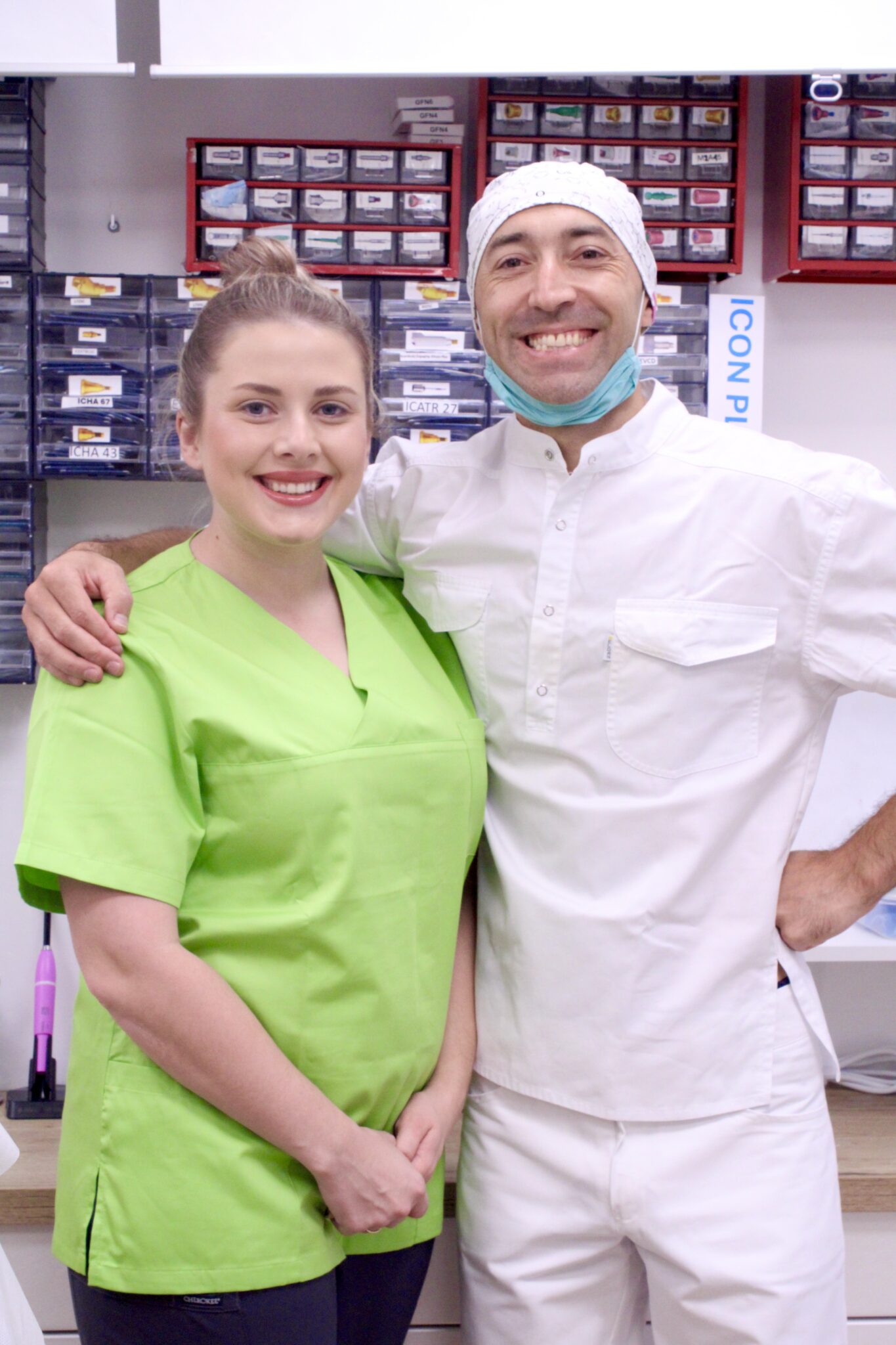Orthopedic Dentistry at Omni Dent Clinic
Orthopedic Dentistry in Prague — Restoring and Enhancing Your Teeth
Orthopedic dentistry focuses on restoring lost or damaged teeth and correcting functional and aesthetic issues in the teeth and entire jaw structure.
At Omni Dent Clinic in Prague, our orthopedic dentists use modern prosthetic technologies to provide patients with comfortable chewing, proper bite alignment, and naturally beautiful smiles.
What Does an Orthopedic Dentist Do?
An orthopedic dentist diagnoses, restores, and replaces teeth using crowns, bridges, veneers, inlays, and other prosthetic solutions. Their goal is not only to achieve an aesthetic smile but also to restore full functionality — proper chewing, speaking, and daily comfort.
When to See an Orthopedic Dentist?
We recommend consulting with an orthopedic dentist in the following cases:
- Missing one or more teeth,
- Severely damaged or worn teeth,
- Irregular bite or dental arch deformities,
- Visible aesthetic imperfections when smiling,
- Difficulty chewing or speaking.
Main Prosthetic Treatment Methods
Modern orthopedic dentistry offers a wide range of solutions, from simple approaches to precise reconstructions created with digital technology.
1. Removable Prosthetics
These are dentures that patients can easily remove for hygiene. They are reliable and cost-effective solutions for significant tooth loss.
2. Fixed Prosthetics
Restorations permanently attached to teeth or implants. They offer comfort and aesthetics very close to natural teeth.
3. Implant Prosthetics
When a tooth is missing, an implant is placed, onto which a crown is attached. This restores chewing function and aesthetics for many years.
4. Digital Prosthetics
Using CAD/CAM technology, crowns, veneers, inlays, and other constructions are created with exceptional precision and perfect fit. The result is natural appearance, long durability, and maximum comfort.
Types of Prosthetic Constructions
- Fixed prosthetics — crowns, bridges, veneers, inlays,
- Removable prosthetics — partial or full dentures,
- Combined systems — removable prosthetics anchored on implants,
- Aesthetic constructions — metal-free crowns and veneers for the smile zone.
The Role of the Orthopedic Dentist in Comprehensive Care
Orthopedic dentistry works closely with other dental fields — therapy, surgery, and hygiene. Before creating a prosthetic, we assess the condition of teeth and gums and treat any problems such as cavities or periodontal disease. This ensures durable and healthy reconstructions for the entire dentition.
Why Patients Choose Omni Dent Clinic
- Experienced orthopedic dentists,
- Modern CAD/CAM equipment and high-quality materials,
- Precise diagnostics and personalized treatment plans,
- Comfortable environment and considerate approach,
- Natural appearance and long-term stable results.
If you are looking for an orthopedic dentist in Prague, you are in the right place. At Omni Dent Clinic, we help restore the health, aesthetics, and confidence of your smile.
Book a consultation today, and together we will find the best solution for you.
Fixed Prosthetics
How a Visit Proceeds

Examination and Diagnosis

Anesthesia

Dental Treatment

Completion
A space of health and comfort
Follow Us on YouTube
Team of Therapists at Omni Dent Clinic

Irada Richtrova
of any complexity

Vitalii Shmaduk
expert in surgery and implantology.

Alina Nazarevich
treatment

Václav Odstrčilík
Contact Us
FAQ
What is orthopedic dentistry?
Orthopedic dentistry, also known as prosthodontics, focuses on restoring and replacing damaged or missing teeth. It addresses both functional issues, such as bite and chewing, and aesthetic concerns, providing patients with a healthy and natural-looking smile.
When should I visit an orthopedic dentist?
You should consider visiting an orthopedic dentist if you have missing teeth, severely damaged or worn teeth, irregular bite patterns, visible aesthetic issues, or difficulties chewing and speaking.
What treatments are available in orthopedic dentistry?
Orthopedic dentistry includes removable prosthetics (dentures), fixed prosthetics (crowns, bridges), implant-supported solutions, and advanced digital prosthetics using CAD/CAM technology for precise, long-lasting results.
How does an orthopedic dentist improve my smile and function?
Orthopedic dentists restore teeth using crowns, bridges, veneers, inlays, and other prosthetic solutions. They ensure proper bite alignment, comfortable chewing, clear speech, and an aesthetically pleasing smile.
Why choose Omni Dent Clinic for orthopedic dentistry in Prague?
At Omni Dent Clinic, you receive care from experienced orthopedic dentists using modern CAD/CAM technology and high-quality materials. Each treatment plan is customized, precise, and focused on long-term results, comfort, and patient satisfaction.



